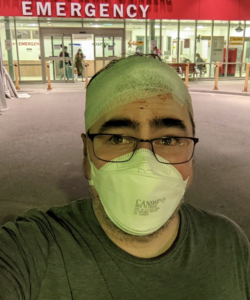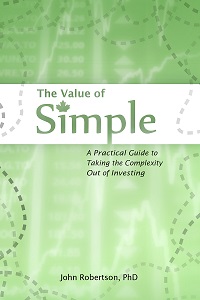I had been off, away from the blog, working on a third edition of the Value of Simple (mostly struggling with how much I could excoriate certain robo-advisors for not listening to me before it became libel), and it’s been going very slowly. Instead, I accidentally wrote an entirely different book on, of all things, Curling.
How do you accidentally write a book??
Well, I ran a development league at the curling club. The idea was that we’d have a mix of experienced curlers and lot of new curlers, and it would be a home for those fresh out of our learn-to-curl programs. As part of that, I wrote a weekly email with a development tip to send around. And you know me, that wasn’t a short tip like “line up to the target before you get into the hack”, no, it was pages and pages with diagrams.
So by the end of the year I joked that if it felt like they had read a book from me, they weren’t too far off, all together those emails were almost book length. So of course a few people chip in with “you should make it an actual book!”
And, well, here we are.
What’s it called?
Curling for Beginners and Improvers. In a bold, highly unusual step for me, the branding and title are actually very descriptive of the book’s scope and target audience.
What is it about?
Curling! It’s a how-to guide (I seem to be building a specialty in that field) with a big focus on helping relatively new players. It was written in the first place as a supplement and extension to our 4-week learn to curl program, so includes the basics like how you deliver a stone, along with some discussion of common errors and why we do things the way we do. It includes a discussion of the theories behind directional sweeping, and a very light touch on strategy.
I know that the directional sweeping stuff in particular is something that is missing from the market — there are no books covering it yet, and even on YouTube there are precious few resources to help get newbies up to speed on the topic.
When is it coming out?
The release date is set for Oct 16th, to line up with the start of the curling season. With all of the tragedies of the last year, I had to squeeze all of the slack out of the publication timeline so there is a small chance the print edition may get pushed back if there’s a hiccup in the process (I’m expecting the ARCs to arrive any day now, and if there are mis-prints and I have to start over with the printer that will add delays). But e-books are finalized and available for pre-order, and I expect pre-orders for print editions to open up around Oct 1.
How does it compare to other books/resources out there?
I know I’m a bit of a weirdo when it comes to writing/publishing in that I do an environmental scan to make sure I’m actually filling a need and not just piling one more book out into the world (which if I ever decide to write fiction I will have to get all the way over), but I was surprised at how few curling books are out there. I know it’s a niche sport and all, but given how many dividend investing books are out there, I was surprised…
Anyway, What’s Your Call? only came out two years ago, and is entirely devoted to strategy. So I kept the strategy section fairly light and focused on the club-level, first-time skip.
Curling: Steps to Success would be the most similar competitor — that one and mine are both basically books on how to curl. It came out just before the directional sweeping effect was discovered, so doesn’t have anything about that in there. It’s a bit of a different voice — I’m more focused on the casual player/newbie, while Sean Turriff has more of a focus on turning you into a competitive player (so more on teambuilding and drills to do, mental performance issues, less time on the basics). Mine has more Star Trek references, which really is what people come to a curling book for is it not? His has more drills to use in practice sessions. Overall I think if you finished mine and wanted even more with a different voice (hearing/reading the same information different ways does help it sink in more) I would say that’s a good one to get next.
Curling for Dummies has the recognizable “for Dummies” branding, but is ancient (don’t be fooled by the 2020 release date that Amazon shows, it’s just a reprinting of the 2001 edition). It has a lot of non-how-to content that still holds up that I don’t bother getting into (like how the ice is maintained and where granite comes from), but the descriptions of the equipment and methods are (a lot, a little, respectively) out of date now. They do cover the no-lift delivery at least, but the idea of how to line up hadn’t quite matured to where we are today (it was still close enough to the transition from the old backswing delivery). The sweeping section teaches sweeping on a slider, which is how I learned but generally discouraged for beginners now.
Curl to Win is also out of date (it says it was published in 2009 but feels even older than Curling for Dummies, with Russ Howard’s anachronistic-even-for-the-time promotion of the backswing delivery, and anyway looks like it’s out of print now). I didn’t manage to finish Coleman’s books, which were more autobiography than guide (at least as far as I made it).
And that’s about it. It’s a pretty small field for books, which I was surprised by when people told me there was a need for such a book after I made the joke about the weekly emails. Even if my Curling for Beginners and Improvers and the other books on the market had perfectly overlapping scopes, there would probably still be room for it just to hear the info in different voices and approaches.
Of course the scopes aren’t perfectly overlapping: most of the other books also seem to split their focus on helping someone totally new to the sport while also including “become a champion!” type aspirational sections (and right in the title of some). I don’t know if that helps sell books, and maybe I’m missing out by limiting my focus. The simple fact is that I’ve taught hundreds of people in various learn to curl sessions, clinics, and special events, but coached/played zero national champions, so it’s simply not in my wheelhouse to talk about anything other than getting started in the sport and then getting a little better at the recreational level.
There are a bunch of non-book resources, too. Jamie Sinclair’s YouTube channel is terrific (if not quite structured for a start-from-scratch viewer — an advantage books still have). Matt Bean has a well-structured online course available. Both of those offer videos which can really complement written descriptions well, so be sure to check them out, too. For strategy, there’s resources like Chess on Ice.
Interesting, I’ve never heard of this “Curling” that you speak of.
The book is also for you. Curling is a sport that I love, and I try to share my joy in it with the reader, and help bring you along. It’s so inclusive because you can have multiple generations playing together in a single game, which also means it’s a sport that can keep you active for life. It meets you where your abilities and passions are: you can have people putting their all into it with incredible physical effort that spikes even an elite athlete’s heart rate to the top of their range, alongside people who are just trying to focus on the strategy aspect and keep their exercise to nothing more intense than a light walk.
Most importantly, the Canadian winters fly by when you’re curling every week.
I’m sold, where can I preorder it?
I will update this post when more options become available. For now, the e-book is available for pre-order at ~all of the major e-book retailers. And many of them are offering a pre-order discount! You can also pre-order a print copy through my Value of Simple store (yes, set up for a totally different book) — note that those can only be shipped within Canada, but if you want it signed I can do that (though honestly, defacing the book like that will probably only decrease its value).
Pre-order the e-book from Amazon Canada or Amazon US (rest of the world should get taken to their country from the US link) if you have a Kindle reader.
Pre-order the e-book from Rakuten Kobo, Google Play, or Smashwords, Apple, or many other retailers if you have a Kobo, android tablet, or other device that you don’t want to go to Amazon for.
Should I sign up for curling now?
Yes! Most clubs are accepting registrations for new members right now (September, if you’re reading this later), go ahead and sign up if you’re interested in curling, take their learn-to-curl clinic, and the book will come out in time to help supplement those on-ice lessons. Or just sign up and hope with the book and some YouTube videos you’ll figure it out in time. It’s fun.
I see you have a “blog” section on the site for the book. Are you transitioning into a curling blogger?
No, that’s to put up a few posts talking about the book and the writing process, and to act as an “errata” section for any errors or changes that may be needed (e.g., if an academic study in the future debunks one of the competing theories on directional sweeping, that’s where the update will go). I’ve got a few little teaser posts scheduled leading up to the book’s release, including one talking about the behind-the-scenes editorial decisions and the scope I decided the book should have.
So for example, Curling for Dummies is roughly twice as long as Curling for Beginners and Improvers. It’s not because CfD has that much more information on how to curl — I haven’t done a quantitative word count comparison but I’d estimate it’s actually got a little less on delivery and a lot less on sweeping. It’s because CfD’s scope includes so much extra stuff that I thought was unnecessary: a history of the sport (yawn), a description of how curling ice is made and maintained (cool, but not something the average player needs or likely wants to know — the equivalent of including a chapter on Zambonis in a book on hockey or a chapter on lawnmowers in a book on golf), a bunch of “top 10” lists, most of which aged like milk, a section on becoming a coach yourself… you quickly get a lot of pages that, IMHO, weren’t relevant to the core purpose of the book. Anyway, discussing those decisions is that post.
I plan to put up some bonus content (e.g., a chapter that I cut that I was really on the fence about keeping in there), a bit more behind-the-scenes info, and then the page will be mostly a static sales page for the book.
Seriously now, how do you accidentally write a book? Like, how exactly did this go from a bunch of emails to a coherent book?
That is the topic of another blog post on the new site.
In brief, I made the joke about my emails being so long that I had basically forced everyone to read something close to a book by the end of the year. And some people encouraged me to make it an actual book.
Even with a lot of words written, it was a bunch of tip-of-the-week things — I had a few that chained together more coherently for a broader topic, but before it could become a book nearly all of it needed to be restructured and anchored to some coherent order. Plus some of it was stuff specific to our curling club (like how to find a spare, information about our other leagues, etc.), which didn’t make sense to keep. I had to create a detailed outline of everything I’d want a book for new and developing curlers to learn.
Oh, and I had to do it fast — that joke was in my end of season message, so if I wanted to shoot any photos on ice, I had to get to it ASAP before the ice was all gone. The original emails had a bunch of good-enough-for-an-email pictures and illustrations, including pictures I may not have had copyright to, a bunch of figures mocked up by freehanding in MS Paint (one of which I kept in the book because it was cute and to be able to show where this all started). So I worked feverishly, got an outline hammered out, then listed all the photos and poses I might possibly need for every chapter, then got to shooting with Alexis, the book’s official photographer (and it’s partly her fault — I asked her if trying to turn all the tips into a book was a dumb idea and she was actually supportive so she got dragged into the project).
In the end, we had a bunch of new photos and I created many new figures (or re-made them but cleaner). The tips had to be extensively re-written, and a bunch of new ones added — just under half of the word count is new stuff that was missing from the original set of tips. Once the ice was out I spent the early summer writing and re-writing (and thankfully finished before the serial tragedies started hitting).




 Questrade: use QPass 356624159378948
Questrade: use QPass 356624159378948 Passiv is a tool that can connect to your Questrade account and make it easier to track and rebalance your portfolio, including the ability to make one-click trades.
Passiv is a tool that can connect to your Questrade account and make it easier to track and rebalance your portfolio, including the ability to make one-click trades.